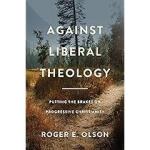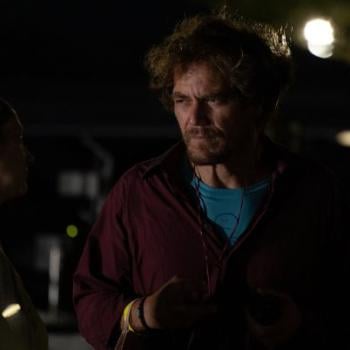
Zombies taking over a school: that’s the upshot of South Korea’s January boon to Netflix. East Asian creativity does appear to be stirring things up in the media sphere since titles from the ROK started arriving at such a prodigious rate on the platform; could Seoul be the new Hollywood?
After Squid Game, released in September last year, Western eyes like mine have been drawn with increasing fascination to Korean cultural efforts – endeavors in mass culture to be more precise. I feel an attempt at ushering the conversation on this growing output in a religious direction is apt. (And writing is a good way to justify the time I spend watching Netflix as well!)
I finished another Korean series this week: All of Us Are Dead. Yes, reader, I’m sure the title does come off better in its original dialect! As a religious blogger, I was interested in the show’s nods to Christianity. The program is no theological tour de force, I confess, although matters divine and supernatural are never far off.
Indeed, All of Us Are Dead opens with a shot of a neon cross reflected in a rippling pool of rainwater. Its crimson form is trembling as pouring droplets churn the puddle in the night. Smoke is also obscuring the view, but a cruciform shape eventually comes into clear focus.
That symbol of unimaginable agony, the Cross, lends its powerful significance to the opening scene. Gwi-nam, the school bully who will become the main antagonist, is beating up an unpopular student on a roof. It’s an intense portrayal of adolescent aggression. And it ends with Gwi-nam throwing his prey from a height as a clap of lightning intones its wrath.
We next encounter Gwi-nam’s victim, still somehow living after his fall, on a hospital trolley. His father, Dr. Lee, who works as a high school science teacher, soon arrives. To his horror, Lee finds his injured son entering a zombie-like state. It’s a hideous transformation: from frightened schoolboy to snarling creature; the make-up and special effects which go towards making this believable are top-drawer.
Cue the second religious reference. Lee resorts to a brown Bible as an improvised weapon to subdue the zombie. The copy he grabs has a cross embossed into the leather binding. Before the zombie can overpower him, Lee just about manages to pummel the monster unconscious. The scene is true, then, to the Christian Cross with its paradoxical mystery: violence, while evil, can also vanquish evil.
But it isn’t only the iconography of the Cross that features; the self-sacrificial ethics of the Crucifixion are also vital to the show. ‘Greater love has no one than this: to lay down one’s life for one’s friends’ (John 15:13). And a poignant sequence in the final episode honors all the characters who gave up their lives in a courageous final stand in order to save others from the zombies.
A brief interlude into a Christian sermon underlines this ethic: ‘A person who does not act righteously, a person who does not love their brothers and sisters,’ declares a preacher to resolute Amens from his congregation, ‘that is not one of God’s people’ (ep. 5). And as John wrote, self-giving is the highest expression of a Christian’s passion for others.
With its explosive opening scenes done, the show slows down a little and we get an introduction to life at Hyosan High, the school where Dr. Lee teaches, and where the series is mostly set. Everything is normal, with students and staff all enjoying an ordinary school day… for now.
Different extracurriculars appear in this montage, including a school choir singing Allegri’s Miserere. Now there’s a piece I didn’t expect in a Korean horror series! I first encountered Allegri when I was doing my GCSEs. For non-UK readers, GCSEs (General Certificates of Secondary Education) are the qualifications that we Brits take when we’re sixteen.
The Miserere is beautiful. You can read all about it, and hear sung it as well, on the Classic FM website. As the page explains, Allegri set a biblical Psalm – 51, King David’s prayer of repentance – to his own ethereal music. It’s a piece that stays with you, no matter how long it’s been since your previous listening.
As an appeal for deliverance from sin, the Miserere will have a role to play later in the series. For now, let’s flesh out some plot… It emerges that a virus is responsible for the zombification of Dr. Lee’s ill-fated son, a virus created – for noble though misguided reasons – by Lee himself.
Events take over and a cycle of infections breaks out in Hyosan High. Before long, total chaos unfolds as one infected student attacks another, passing on the virus until almost everyone is a flesh-eating predator. There are gruesome deaths in the show; Korean TV never disappoints for blood and guts!
As the series unfolds, Dr. Lee’s video diaries – research logs from when he was developing the virus – give us agonized reflections on science gone too far. Theological concepts help us grapple with extreme circumstances; and in one video log, Lee makes use of religious terminology to lament his creation: ‘It’s like every sin entered the human body in concentrated form’ (ep. 9).
Perhaps a scientist is an unlikely figure to frame a biological phenomenon as a spiritual struggle – though the comment on sin has a scientific ring – but it adds more depth to the plot and raises the stakes. Not only must our heroes come through their ordeal alive – they must also hold onto their humanity.
There is one character who stands out as contributing to the show’s moral complexity: Nam-ra. She contracts the virus quite early but retains the free will to decide against acting on her cannibalistic urgings. I was a little frustrated at how certain characters only become partial zombies – with minimal explanation as to why this is – but I still became invested in the personal storms Na-ra confronts.
We follow Nam-ra’s excruciating battle to contain her illicit hunger through sheer volition, calling to mind St. Paul’s inner turmoil for the Christian viewer; ‘So then, with my mind I am a slave to the law of God, but with my flesh I am a slave to the law of sin’ (Romans 7:25b, NRSV).
Another girl whose case is the same as Nam-ra’s ends up in a military lab. A virologist, who has been observing her, puts his finger on exactly the predicament St. Paul explores: ‘It’s like the human and the monster are fighting inside the patient’ – a clever analogy for the Christian plight against our sins.
Having tied in the notion of sin to the show’s virus, the use of Allegri’s Miserere makes better sense. One scene has a group of students play the Miserere through a PA system to lure the zombies, who are drawn to sound, so they can run. It’s all very meta; David’s prayer for salvation becomes itself a means of rescue!
Theology has a considerable place in the consciousness of South Koreans, with 29% reporting Christian faith to Pew Research in 2010. So the show’s Christian ideas will have met with recognition among its indigenous audience. Unlike, say, Midnight Mass, you can appreciate All of Us Are Dead without examining its religious undertones; but it’s undeniable that a Christian ethos can be found when we the linger over the religious iconography with all its implications.
The series does brush up against a few thorny dilemmas, however tangentially. Remember the scene, for instance, where the neon cross looks down on Gwi-nam tormenting a fellow student. It evokes the perennial question about why God seems far away when the vulnerable suffer – “theodicy” being the name for such a conundrum.
One can, of course, read a theological meaning into stories where it wasn’t intended. Although the Christian themes of self-sacrifice, deliverance from evil and war on sin are undoubtedly present in All of Us Are Dead. Even in Korea’s answer to The Walking Dead is a Gospel of sorts found!
So then, pick up a leather Bible to clobber those undead with and enter Hyosan High for yourself.
3/11/2022 9:26:58 PM





